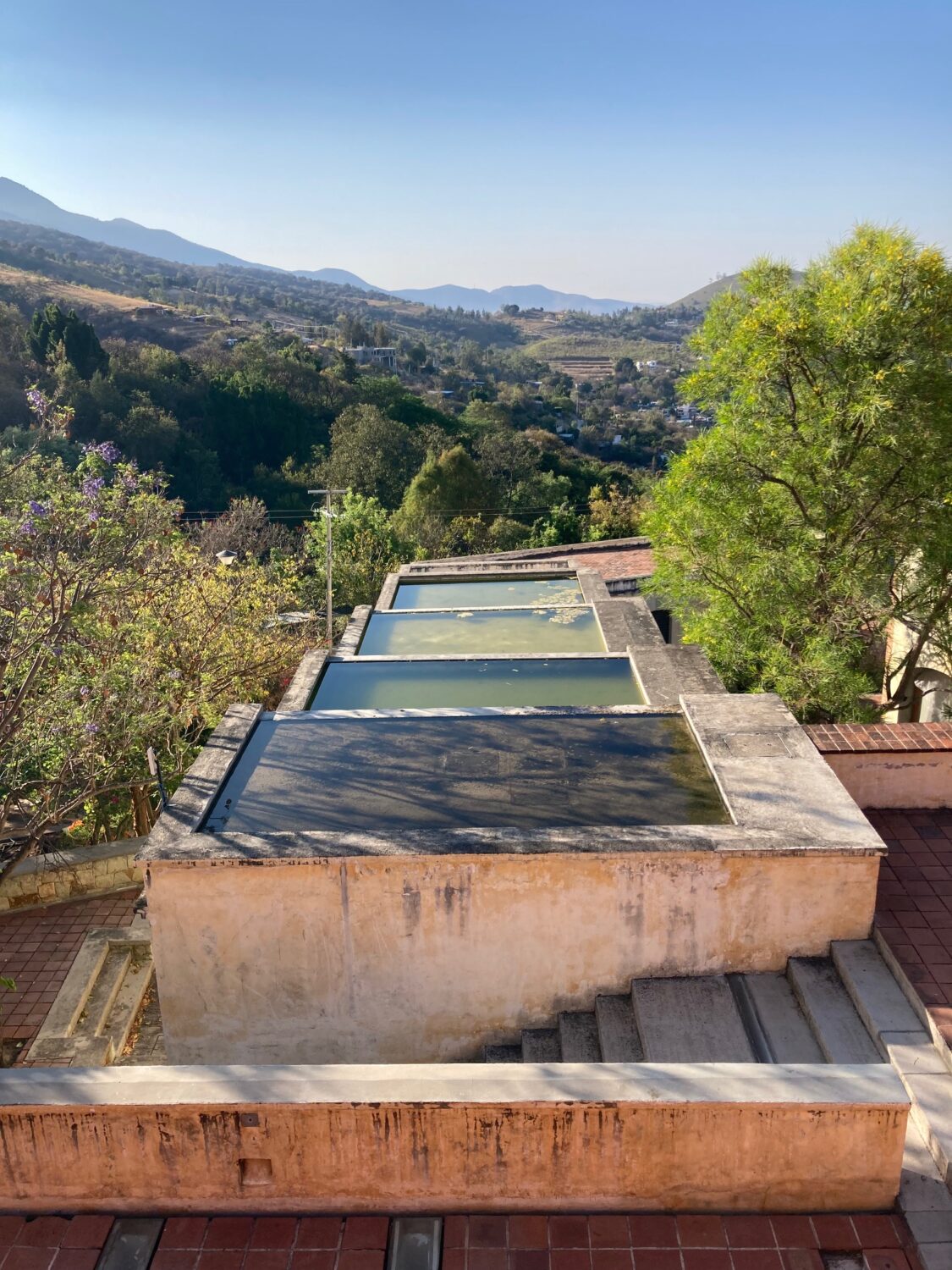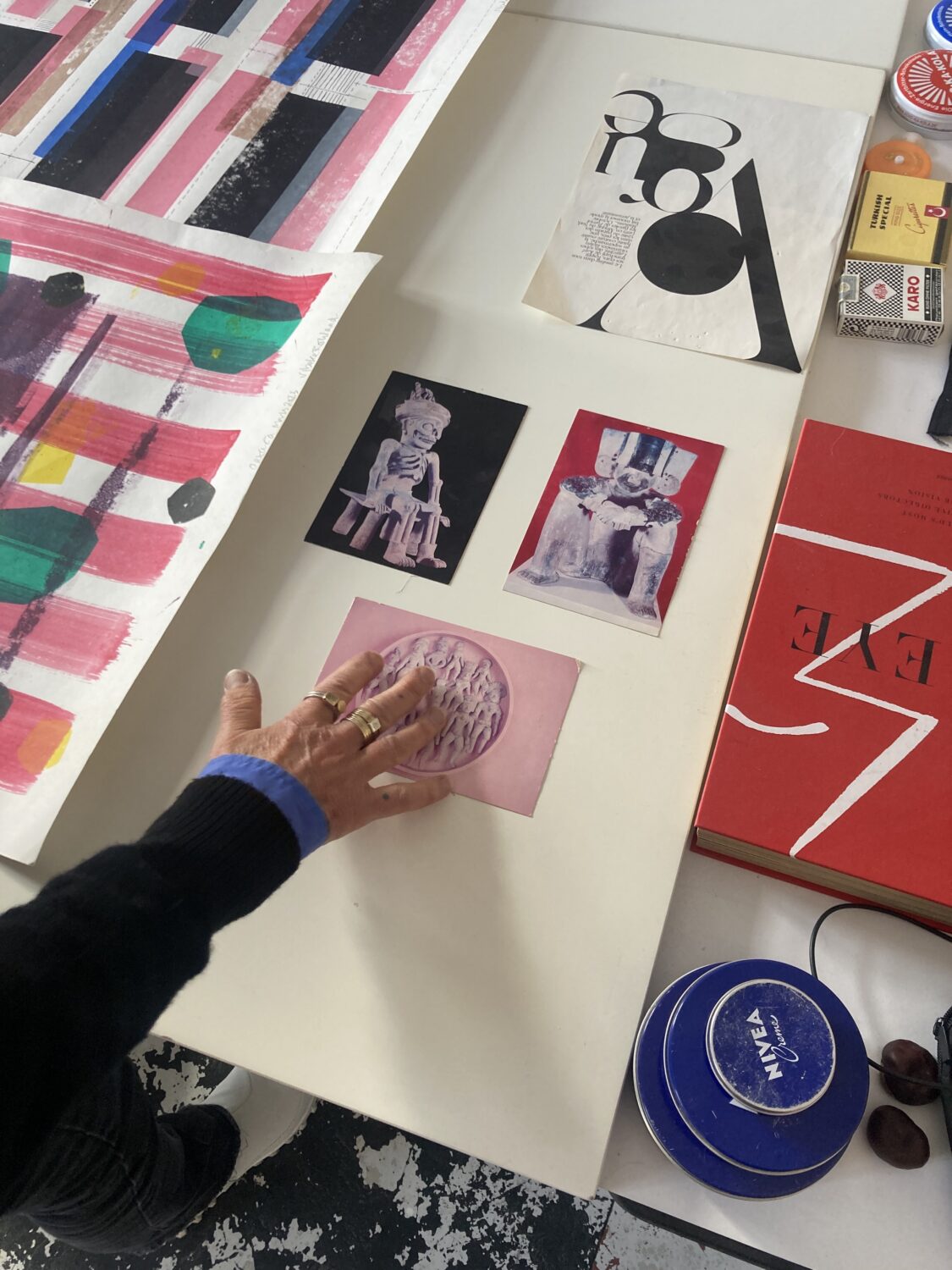When Vibeke Rohland returned from a trip to Mexico in 1994, it wasn’t just souvenirs that she brought back in her suitcase.
She also took with her the inspiration for new works.
In Mexico, she had visited the city of Oaxaca during the celebration of the Day of the Dead in November, an important holiday in Mexico where pre-Columbian rituals mix with the traditions of the Catholic Church. It’s a holiday filled with symbols.
Day of the Dead is a celebration for the dead whose souls return for a few days. To guide them on this journey, people make altars, decorate the graves of the deceased and have a party, among other things.
‘I was deeply fascinated by all the things that the dead take to the grave. All the things that their family and friends think they should take on the journey,’ says Vibeke Rohland.
Vibeke Rohland
Textile artist and designer Vibeke Rohland, born 1957, has designed a wide range of products for Kvadrat, FDB Møbler, Hay and others. She has also exhibited her handmade works in museums in Denmark and abroad and has received several grants from the Danish Arts Foundation.
The exhibition ‘Modern and Abstract Archaeology’, which the visit inspired her to create, was shown at Esbjerg Art Museum in 1996. In the works, Vibeke Rohland worked with memorial objects. On 12 large tapestries she had printed X-ray photographs of everything from cutlery to bags and Barbie dolls.

With the transparent everyday objects, Vibeke Rohland wanted to ‘look into what modern people carry with them,’ as the textile artist puts it. As a child, she dreamed of becoming an archaeologist.
It’s something about what’s hidden. What someone has put away with an intention that fascinates her.
She tells us this as we sit at a table in her studio in the centre of Copenhagen. Everything is painted white; floors, walls and ceilings, but otherwise the room is filled with colourful objects. Old nivea cream boxes, a Chinese cigarette packet, a pair of red sandals. Vibeke Rohland has a close relationship with these things.
It has always been like that, she says.
‘I was never really interested in playing with dolls. It was their ‘accessories’ that I thought were cool,’ says Vibeke Rohland enthusiastically.
The decorative and clearly communicative
This was also what fascinated her about visiting Mexico during the Day of the Dead. Namely, the gadgets associated with the holiday. Like edible sugar skulls, frog and deer figurines, a large skeleton moulded in papier-mâché.
We met to talk about what she has brought back and forth to Denmark as a textile artist and designer in connection with her travels to Mexico. The first was in 1994. The next was in 2023.
An art centre among mountains
In 2023, Vibeke Rohland was an artist-in-residence at CaSa, Centro de las Artes de San Augstín, located in a village outside Oaxaca.
Here she visited an acquaintance, textile artist Trine Ellitsgaard, whom she met for the first time during her trip to Mexico in 1994.
During that first visit, ‘Trine was kind enough to drive me around for the Day of the Dead in the small towns surrounding Oaxaca,’ says Vibeke Rohland.
One evening they drove to a cemetery in one of the villages, Vibeke Rohland recalls.
‘There was life and chatter. Transistor radios, candles, sweet bread and orange velvet flowers,’ she says.
It made a big impression on her that the people in the cemetery were not sitting and crying. They were smiling as they remembered and celebrated the dead.

‘That journey has been with me ever since. I still have the postcards,’ she says, standing up and pulling a stack of technicolour postcards with rounded edges out of a box, which she begins to show.
In the thirty years between Vibeke Rohland’s first visit to Mexico and the next, Danish Trine Ellitsgaard had started CaSa with her Mexican husband, the painter Francisco Toledo.
Trine Ellitsgaard tipped Vibeke Rohland off about applying for an artist-in-residence there, and after a successful grant application, she finally travelled to Mexico again.
CaSa was inaugurated in 2006. Since then, it has been an art centre with exhibitions, shop and workshops.
To get to CaSa, which is housed in an old textile factory from the 1870s, you have to hail a taxi out of Oaxaca and drive 17 kilometres out of town. I know this because I’ve been there myself.
When Vibeke Rohland tells me about the place, which is beautifully situated among the mountains of Oaxaca, I can’t just vividly imagine it. I can remember it: The paper mill at the bottom of the hill. The stairs coloured in coccinelle.

Symbols across language barriers
During her stay, which lasted a couple of weeks, Vibeke Rohland taught screen printing.
At the silkscreen workshop, she taught some basic principles behind visual communication. But even though symbols are an ancient technology for communicating without the use of words, she still encountered language barriers in the teaching situations.
In addition to language differences, getting access to the right materials was also a challenge.
‘I wanted to teach what screen printing can be used for. Namely, to offset and overlap,’ she says.
But it turned out to be a challenge to show this particular technique because they couldn’t get hold of the kind of transparent colours that Vibeke Rohland usually uses for this kind of work.

On the first day, she made a presentation about her practice, which was interpreted. It involved a ‘makeshift display of images.’
‘There was a lot of light. But no blackout curtains,’ explains Vibeke Rohland. The projected images were drowning in it.
But it all worked out fine. Among other things, she brought her book BlackStar 1-180, which she showed to the students and talked about ‘repeating a shape that is not the same.’
The language barrier meant that Vibeke Rohland had to explain herself through visuals even more than she usually has to. For her, it emphasised the great importance of symbols for us as humans.
‘I don’t think you can argue with symbols and colours. Because they communicate something far more sincere than what we can say with words,’ she says.
Vibeke Rohland wanted to teach the workshop participants about colours. So she asked them, in English, which was translated into Spanish, to notice the colours in and around CaSa as they came and went from the workshop. They were each to make their own ‘colour notebook’ from the art centre in the mountains, which Vibeke Rohland refers to as ‘a visual grab-and-go table.’
‘The wildest, most colourful flowers grow there,’ she says with excitement in her voice. ‘It’s so dry, how is that possible?’

This may be due to cultural differences. But during the week, Vibeke Rohland found it hard to feel what the students got out of participating in her workshop. ‘They had worked hard and shown interest, but I didn’t experience the kind of enthusiasm I’m used to at home,’ she says.
When the course was completed and the diplomas were printed, Vibeke Rohland received gifts from the participants. Arts and crafts that they had made themselves. It meant a lot to her.
‘Getting to know people with a completely different approach to arts and crafts and design than in Denmark has been very instructive,’ says Vibeke Rohland.
‘Utility function is a terribly reviled word. But it actually refers to something fantastic. Namely, that the mould is given something extra.’
‘I can’t remember exactly what they’re called,’ she says as she searches for the word. ‘But one example is some Mexican dishwashing brushes.’
‘You can see them when you come up,’ she says. Before long, we move from the studio to Vibeke Rohland’s private apartment, located in the same courtyard as the studio.
Plastic and agave fibres
‘There it is,’ says Vibeke Rohland when we reach the apartment. ‘Escobeta,’ she says, tasting the word.
It’s the name of the small scrubbing brush made of grass roots held together by 2-3 metal rings. There is a collection of them hanging on the wall above her kitchen table. Among them are some colourful plastic versions called ‘Obvio’.
From the kitchen we move into a study. In the centre is a very large table. Again: White surfaces everywhere, even the table top. And then colourful gadgets organised around the table and on shelves along the walls.
When asked how Vibeke Roland’s recent trip to Mexico has influenced her artistic expression, she replies:
‘I don’t think it has influenced the things I do. But it has made me do the things I do. I have rediscovered a great joy in clear expression.’
Vibeke Rohland is fascinated by how objects, through their expression, reveal where they come from.

On the table, she has pulled out books of Mexican crafts and traditions. She loves looking through them.
‘I’m much more interested in what people mould with their eyes and hands than what they can say with words. It speaks to me more clearly,’ she says as she shows me the books. She shows me colourful photographs of embroidery and woven garments, reprints of Mexican artist José Guadalpe Posada’s lithographs and literature about the traditions and cosmology of the Mexican indigenous people.
She bought the books on her first trip to Mexico. On her most recent trip to the country, agave fibres, among other things, found their way into her suitcase:
‘I just sit with them in my hand and then I put them away. Because it’s not something I have to deal with. But they take me further in the works and things I work with.’
About CaSa
Centro de las Artes de San Agustín (CaSa) is located in the village of San Agustín Etla, about 17 kilometres from the city of Oaxaca in Mexico. Behind the art centre are Mexican painter Francisco Toledo and Danish textile artist Trine Ellitsgaard.
It is the first of its kind in Latin America: an art centre focusing on the cycle of nature and sustainable art practices; for dialogue between art, society and nature.
CaSa is housed in a beautifully restored textile factory from 1883 in a scenic area. Since opening its doors in 2006, it has hosted workshops, seminars, residencies in graphic, textile, industrial design, digital and analogue graphics, literature, dance and theatre. CaSa also hosts regular art exhibitions.
Read more @casa_sanagustin (Instagram)
Read more @vibekerohland (Instagram)
Theme: Outlook
Artist-in-residence, exhibitions and competitions in international contexts have always been part of the DNA of craft artists and designers. What stories do they take with them? What knowledge do they bring back home?
Stay tuned for our ongoing releases.


